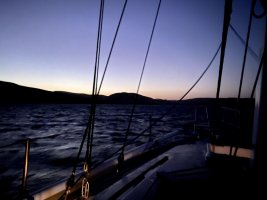TLDR: I took an overnight trip to Drake’s Bay, north of San Francisco with two friends. Anchoring out in high winds was a little scary, but we had a nice trip nonetheless.
The San Francisco Bay is one of the finest natural harbors in the world, but it took European seafaring explorers a surprisingly long time to find it. As early as 1542 Spanish explorers were moving up the California coast from what became Mexico but, so the story goes, the first ship to enter the San Francisco Bay was...
The San Francisco Bay is one of the finest natural harbors in the world, but it took European seafaring explorers a surprisingly long time to find it. As early as 1542 Spanish explorers were moving up the California coast from what became Mexico but, so the story goes, the first ship to enter the San Francisco Bay was...
You do not have permission to view the full content of this entry.
Log in or register now.

